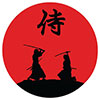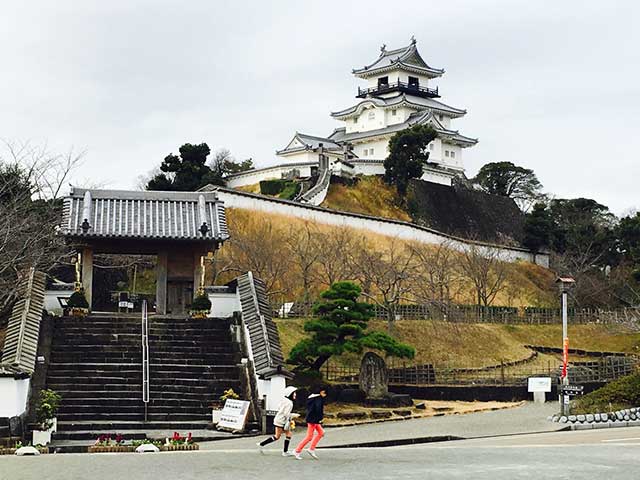
Kakegawa Castle was a familiar landmark for travelers on the old Tokaido, the major route connecting the samurai-era government center in Edo (Tokyo) with the capital, Kyoto. Along this highway, travelers would pass through 53 checkpoints and post towns, stopping only at government-approved inns.
Kakegawa served as the 26th stop from Edo's Nihonbashi, the renowned bridge used as the reference point for measuring national distances. Kakegawa also served as a stop on the salt road running through Shinano Province (Nagano Prefecture). Overseeing this important post town, the salt route, and the strategically vital Tokaido route was Kakegawa Castle. In fact, the Tokaido crossed through the eastern section of the castle grounds, requiring travelers to cross a moat, enter the castle grounds, and then exit again, ensuring the route's security.
The initial version of Kakegawa Castle was built around the 1470s by Asahina Yasuhiro, a samurai under the powerful Imagawa clan of Suruga (Shizuoka Prefecture). Following the fall of the Imagawa clan at the Battle of Okehazama in 1560 at the hands of Oda Nobunaga, the lands of the Imagawa were divided between the rival Tokugawa and Takeda clans. Although Kakegawa was within Takeda territory, it was peacefully surrendered to the Tokugawa in 1568. Tokugawa Ieyasu controlled the castle until 1590, when Toyotomi Hideyoshi, having gained control of most of the nation, forced Ieyasu to accept domains in the Kanto region, based in Edo, and cede his other provinces.
Kakegawa was then commanded by Toyotomi retainer Yamanouchi Kazutoyo (Yamauchi Katsutomo), who completely redesigned and improved the castle. The remaining stone walls, moats, and the basic layout of the castle date from Yamanouchi’s time. The keep built by Yamanouchi was destroyed by an earthquake in 1604 and was not rebuilt until 1621.
The Battle of Sekigahara in 1600 saw control of the nation fall into the hands of the victorious Tokugawa Ieyasu. Yamanouchi was transferred to Kochi in Shikoku, and Hisamatsu Sadakatsu, Tokugawa Ieyasu’s half-brother, became the first in a line of mostly Tokugawa-related lords who ruled until 1746.The Ota clan then held the fortress for seven generations until the end of the Edo period.
The castle was well maintained until the great Ansei Earthquakes of 1854 caused extensive damage. Apart from the keep, many of the buildings were repaired by 1861, and following the end of Tokugawa rule, were used as regional administrative offices.
The original Otemon guardhouse still stands, although in a different location, as Kakegawa City Hall was built on the site of the Otemon Yagura, which was relocated to its current position. Six gates once guarded the central precinct. The Otemon has been reconstructed, although about 50 meters west of its original position. The third gate, Fuki-no-Mon, is now part of Enman-ji Temple. The gate was transferred there at the beginning of the Meiji Period but was lowered by 70 cm. Likewise, the Ote-San-Mon was given to the nearby Yusan-ji Temple in Fukuroi, where it remains.
The Ni-no-Maru Goten, a simple yet elegant palace on the flatlands below the hill, remains intact to this day. Built by Daimyo Ota Sukekatsu after the 1854 earthquake and before the collapse of the shogunate, it is among the last truly original Edo period castle structures and is registered as a National Important Property. The land and a substantial amount of money to finance the castle's rebuilding were left to the city by a wealthy resident. With local donations, the keep, some yagura watchtowers, and walled sections were rebuilt in 1994 in the traditional manner, making Kakegawa the first post-war castle to be constructed in wood.
See also
-
Aizu-Wakamatsu Castle
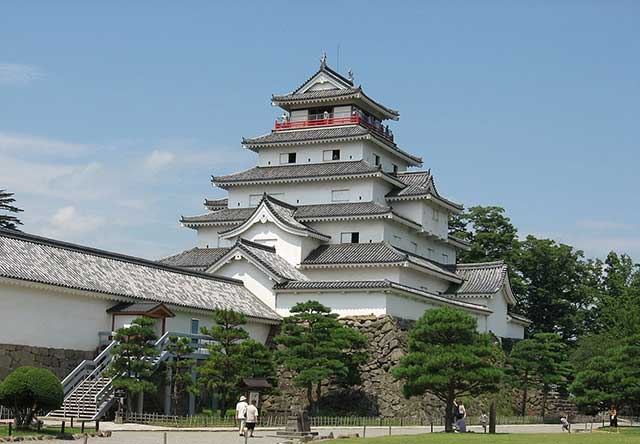
Aizu-Wakamatsu is the most powerful and at the same time the oldest castle in the Tōhoku region in the north of Honshu Island. Its history begins in the 14th century and is closely connected with the Ashina clan, whose members claimed descent from the legendary Taira family.
-
Maruoka Castle
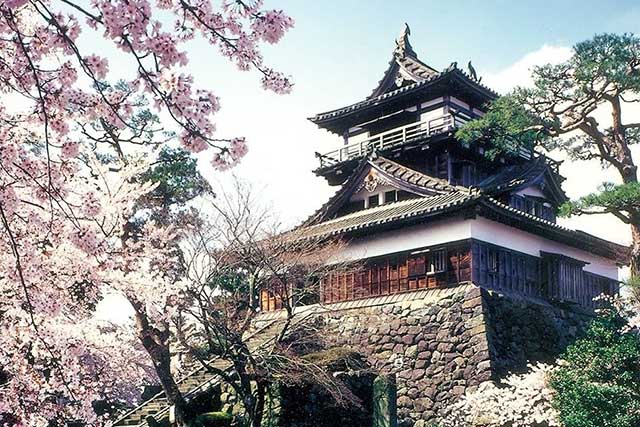
Maruoka Castle is located in the central part of the former city of Maruoka, which is now part of the city of Sakai. This area lies in the northeastern part of Fukui Prefecture. The castle was built on the bank of the Kuzuryu River, on the side opposite Fukui City, which once served as the administrative center of the former Echizen Province. Thanks to its location, Maruoka held significant strategic importance, as it controlled two major routes at once: the Hokurikudo highway leading from Kaga Province and the Mino Kaido road connecting these lands with Mino Province.
-
Marugame Castle
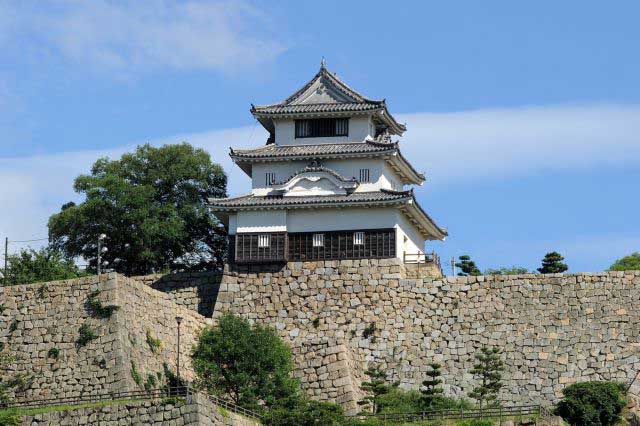
Marugame is part of the so-called “Authentic Dozen,” a group of twelve castles whose donjons have survived to the present day without major reconstructions since the Edo period.
-
Iyo Matsuyama Castle
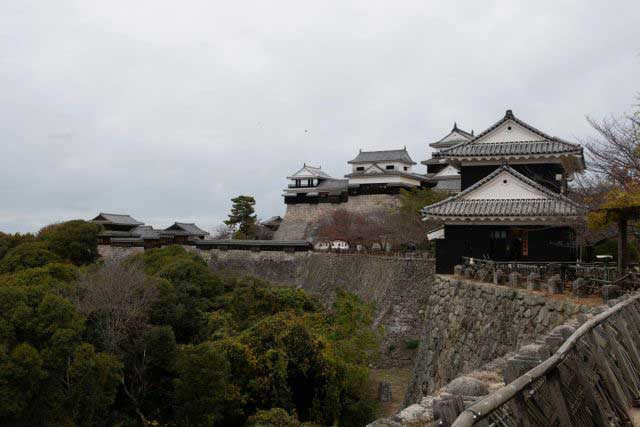
Historically, the center of Iyo Province—corresponding to today’s Ehime Prefecture on the island of Shikoku—was the city of Imabari, while the Matsuyama area was regarded as an agricultural hinterland with broad plains and low hills. During the Muromachi period, the central part of the province was governed by the Kano clan from Yuzuki Castle. With the onset of the Sengoku period, however, this clan lost its former influence and was forced to survive in the shadow of the more powerful Mori and Chōsokabe clans. After Toyotomi Hideyoshi’s forces conquered Shikoku in 1587, the northern part of Iyo Province was granted to Fukushima Masanori, one of the so-called “Seven Spears of Shizugatake.” In 1595, Masanori was transferred to Kiyosu Castle, and the lands around Matsuyama were given to another of the Seven Spears, Katō Yoshiaki, who received Masaki Castle and an income of 60,000 koku of rice.
-
Kanazawa Castle
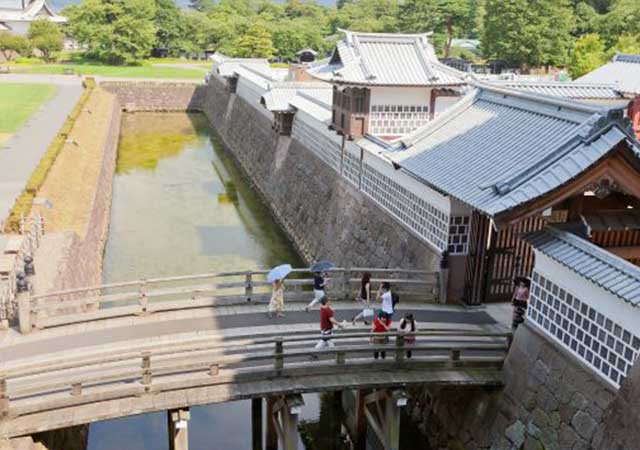
Construction of Kanazawa Castle began in 1580 on the orders of Sakuma Morimasa, a vassal of Oda Nobunaga. The castle was built on the site of the Ikko-ikki sect's Oyama Gobo temple, which is why it is sometimes called Oyama Castle. Morimasa managed to build several moats and begin construction of a castle town. However, after his defeat at the Battle of Shizugatake in 1583, he was executed, and ownership of the castle passed to Maeda Toshiie (1538–1599).
-
Nakatsu Castle
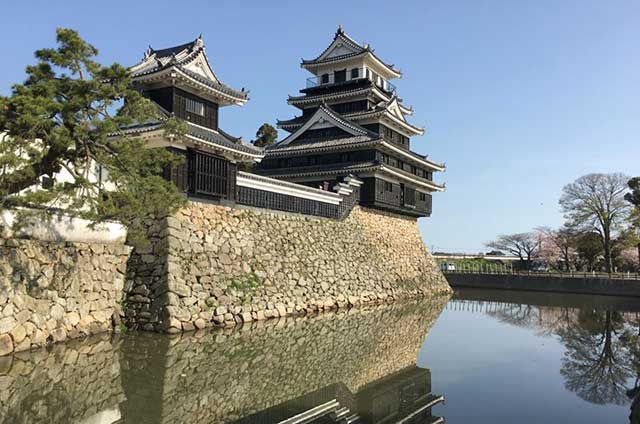
Kuroda Yoshitaka (1546–1604) was one of the closest advisors to the legendary military commander Toyotomi Hideyoshi. He took part in key military campaigns of the late 16th century, including the campaign against Shikoku in 1585 and the campaign against Kyushu in 1587. Later, during the second campaign in Korea, Yoshitaka served as chief advisor to the commander of the invasion forces, Kobayakawa Hideaki. After Hideyoshi's death, he swore allegiance to Tokugawa Ieyasu, thereby securing his influence and patronage under Japan's new leader.
-
Edo Castle
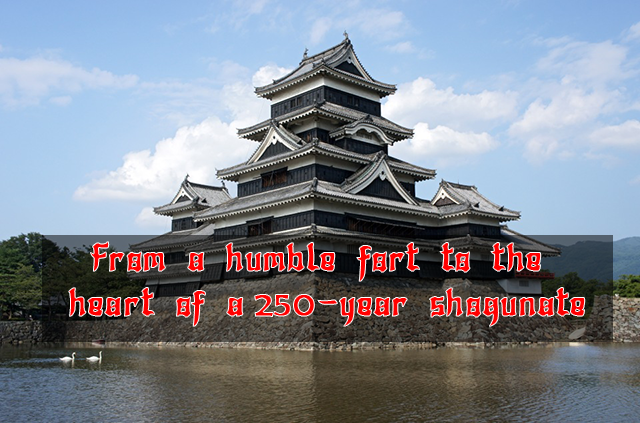
The history of Edo Castle dates back to the Heian period, when the Edo clan built a small fort on this site. In 1457, the vassal of the Uesugi clan, Ota Dokan (1432–1486), constructed a full-scale castle here. Internal conflicts weakened the Uesugi clan, and in 1524, Ota Dokan’s grandson, Ota Yasutaka, surrendered the castle without resistance to the forces of Hojo Soun, the ambitious leader of the Hojo clan. While Odawara Castle remained the clan's main stronghold, Edo was considered a key strategic fortress.
-
Samurai Museum Shinjuku

Situated in the vibrant district of Shinjuku, the museum showcases an extensive collection of samurai armor, weapons, and cultural artifacts spanning from the Kamakura to the Edo period. The exhibits aim to convey the samurai's unwavering commitment to honor and discipline, reflecting how their spirit continues to influence modern Japanese culture.

